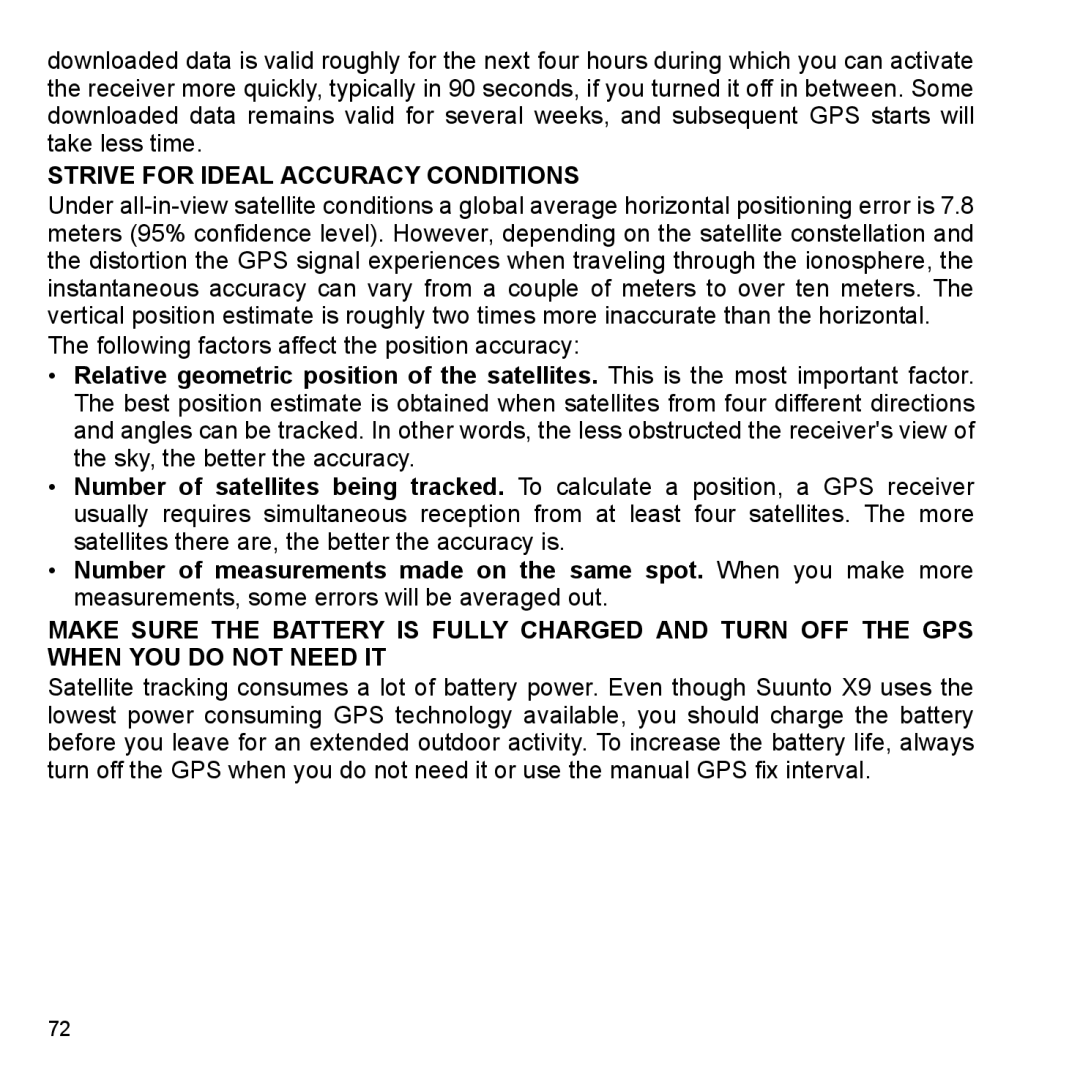downloaded data is valid roughly for the next four hours during which you can activate the receiver more quickly, typically in 90 seconds, if you turned it off in between. Some downloaded data remains valid for several weeks, and subsequent GPS starts will take less time.
STRIVE FOR IDEAL ACCURACY CONDITIONS
Under
The following factors affect the position accuracy:
•Relative geometric position of the satellites. This is the most important factor. The best position estimate is obtained when satellites from four different directions and angles can be tracked. In other words, the less obstructed the receiver's view of the sky, the better the accuracy.
•Number of satellites being tracked. To calculate a position, a GPS receiver usually requires simultaneous reception from at least four satellites. The more satellites there are, the better the accuracy is.
•Number of measurements made on the same spot. When you make more measurements, some errors will be averaged out.
MAKE SURE THE BATTERY IS FULLY CHARGED AND TURN OFF THE GPS WHEN YOU DO NOT NEED IT
Satellite tracking consumes a lot of battery power. Even though Suunto X9 uses the lowest power consuming GPS technology available, you should charge the battery before you leave for an extended outdoor activity. To increase the battery life, always turn off the GPS when you do not need it or use the manual GPS fix interval.
72
